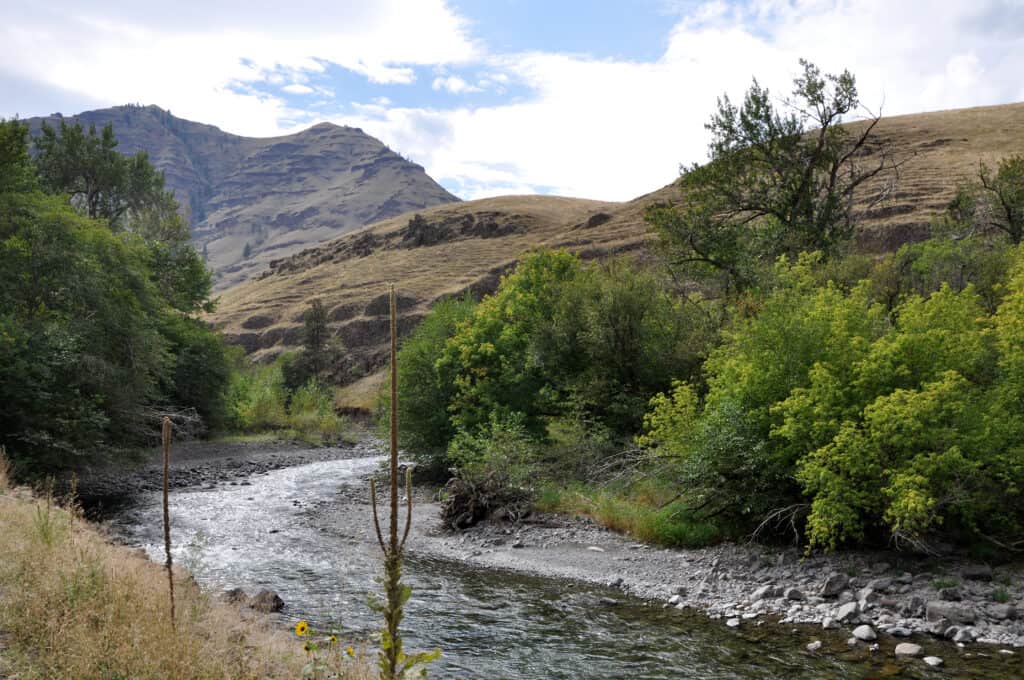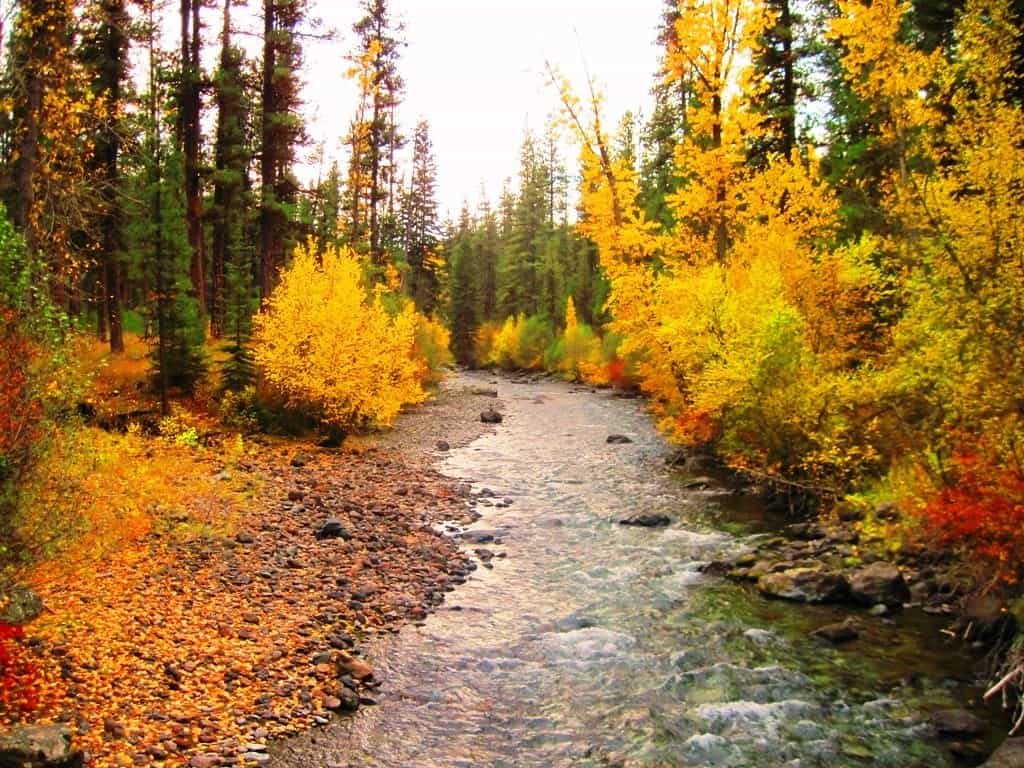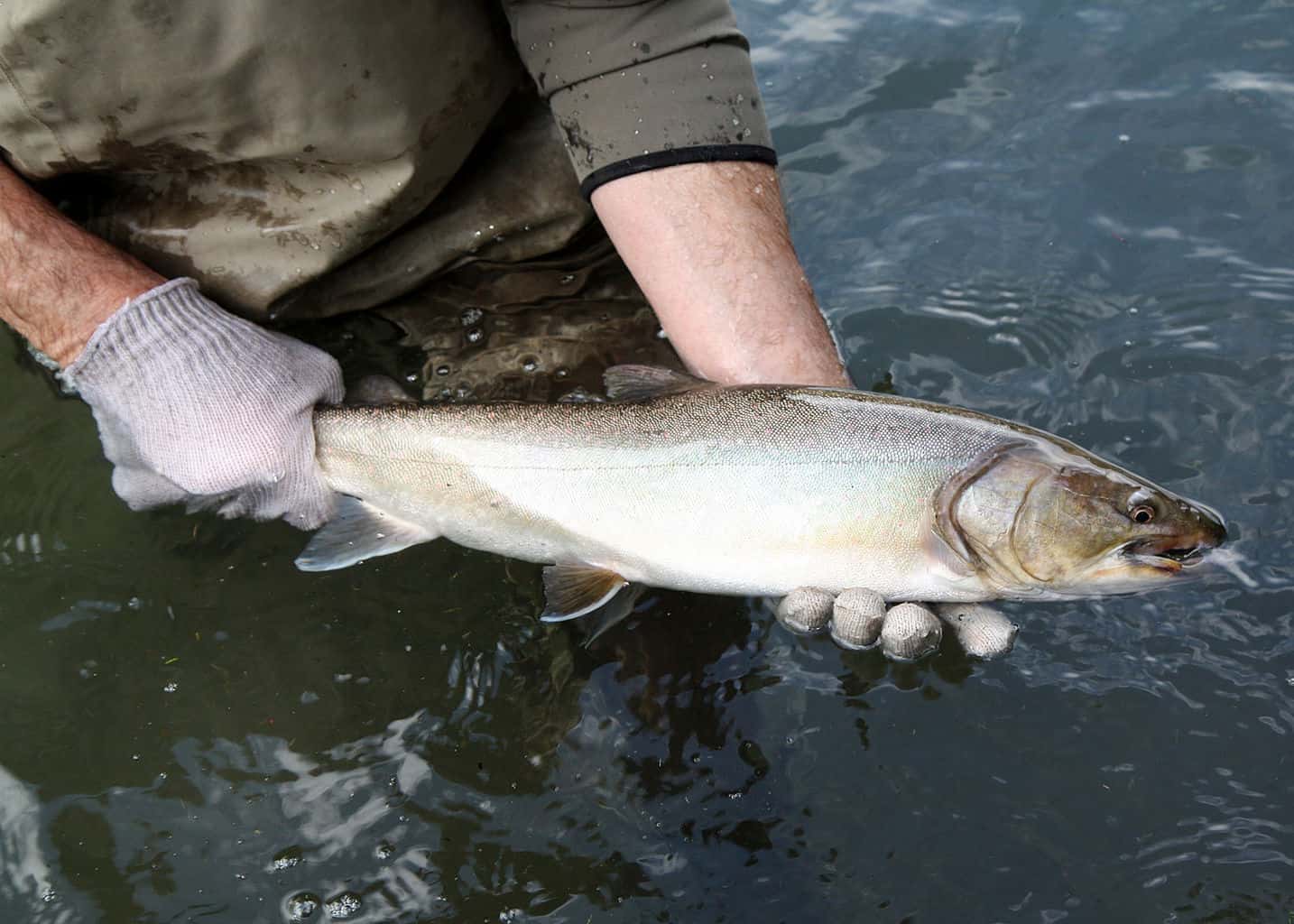Odds are, even if you’ve been fishing Oregon for years, you might not have heard about the Imnaha River.
It’s been somewhat of a well-kept secret for decades, mainly due to its incredibly remote location.
Though the Imnaha is in Northeast Oregon, it’s hours from other, more popular Northeast Oregon rivers like the Wallowa River and the Grande Ronde River.
The Imnaha, fortunately for anglers, offers plenty of public access once you get there.
Steelhead are the main prize on the lower river, while rainbow trout and bull trout are available farther upstream. In fact, the Imnaha is without a doubt one of Oregon’s best bull trout fisheries. (To be honest, there are only a few of them!)

Steelhead Fishing
Steelhead on the Imnaha begin to enter the river in September and October, but fishing doesn’t peak until the late fall.
Fish are available in the river through the spring.
For fishermen who want a remote, relatively unfished steelhead river, the Imnaha is choice.
The Imnaha is a small river, which means that anglers used to fishing rivers like the Deschutes and the Rogue need to adjust their tactics to better approach the small water.
Spinners and jigs rank among the most popular techniques used by conventional fishermen here.
Spey fisherman have a blast with traditional spey flies, and nymphing for steelhead is also highly effective on the Imnaha.
If you venture out to the Imnaha, you can be sure that you won’t find too many other anglers out on the water. The region is one of the most remote in Oregon, and navigating some of the unmaintained dirt roads can be a challenge for some.
For those who are willing to brave the remoteness, though, the Imnaha is a great little steelhead fishery.
Note that while this region’s streams including the Imnaha typically have three-fish limits for fin-clipped hatchery steelhead, those harvest limits may be reduced during lower-run years. It’s always best to check for regulation updates before fishing.
Also, you can read about the best ways to catch steelhead in our simple guide.
Bull Trout Fishing
Unfortunately, you can count the number of productive bull trout fisheries in Oregon on one hand. This is in large part due to dangerously low populations on most rivers.
Fortunately, the Imnaha is one of the few rivers in Oregon that has a strong enough bull trout population that the Oregon Department of Fish and Wildlife allows a catch-and-release fishery.
That makes the Imnaha, along with the Wenaha River in Northeast Oregon and the Metolius River in Central Oregon, unique spots where anglers can legally fish for these ferocious fish. The only place where you can keep them in Oregon is Lake Billy Chinook.
While fishing for bull trout is legal on the main stem Imnaha, we can’t stress enough that it is strictly catch-and-release for these fish. Bull trout are considered threatened across much of their native range across the West. Check regulations for updates before fishing.
The upper stretches of the river are most popular for bull trout, and they are present in large numbers. Many fishermen will tell you that the Imnaha is the best bull trout fishery in the state.
The river is open to catch-and-release bull trout fishing below the forks down to the mouth under exceptions to the zone regulations.
Streamers and nymphs both work quite effectively on the Imnaha, and the bull trout are aggressive. Conventional fishermen use spinners to target bull trout.
Even with the numbers of fish present, the fishing for bull trout on the Imnaha can be sporadic.
Late summer through early fall is the most common (and productive) time of year to fish for them, and they will often follow the salmon runs upriver, feeding on their eggs when they spawn.

Bull trout will do their own spawning in the cooling water of autumn. That’s extra reason to always handle them with care to keep this uniquely healthy fish population strong.
Don’t take them out of the water, and unhook and release them as quickly as possible!
Rainbow Trout Fishing
Rainbow trout fishing can be productive on the Imnaha, even though fishing for rainbows often gets overlooked by fishermen in the pursuit of bulls.
Rainbows on the Imnaha are usually caught by fly fishermen, who fish in the mid to late summer with terrestrial patterns and nymphs.
The middle stretch of the river, near Cow Creek, is the most popular for rainbow trout.
They can be found in all areas of the river, but most anglers center their focus around the middle stretches.
Fishing the middle stretch of the river offers advantages, too, as most of the bull trout fishermen stay farther upstream and the steelhead fishermen downstream.
If you’re looking for solitude and productive trout fishing, the middle reaches of the Imnaha might be perfect for you.
Increase your odds by reading our simple guide to trout fishing techniques and tips.
Salmon Fishing
The Imnaha has historically had impressive wild spring Chinook runs (which, in fact, arrive during the summer). A hatchery program was implemented in the 1990s to help revive these wild runs.
Because of its hatchery run, the Imnaha does get a fair amount of fishing pressure for salmon some years. Fish begin to arrive in the late spring, and springer fishing can be good through late summer.
Generally, fisheries biologists determine the strength of the run as well as the ratio of wild to hatchery fish before they open the Imnaha.
While it’s not one of Oregon’s better salmon rivers, it can fish well when it is open because that typically means a stronger run. Remember, only hatchery fish are allowed to be retained on the Imnaha.
Spinners, bobber techniques, and drift fishing are popular for salmon on the Imnaha.
Fly fishermen generally focus their efforts on steelhead and bull trout, but the occasional spey fisherman will try for a Chinook.
Looking for more suggestions on how to catch salmon? We have a simple guide to salmon fishing techniques covering rivers and other types of fisheries.
Smallmouth Bass
Much like the Grande Ronde, the Imnaha provides opportunities for bass fishing in its lower reaches.
The bass fishing isn’t a huge draw here, partly because most anglers can find these fish far closer to home. But, there are fun fishing days to be had during the warmer parts of spring and summer.
Bass start to become active in the spring, and anglers find success targeting them with a number of techniques. Spinnerbaits, topwater baits, and spinners all work well for conventional fishermen.
Fly fishermen catch bass on streamers and poppers.
Bass aren’t the main attraction at the Imnaha, but they’re a welcome distraction if fishing otherwise isn’t working out.
Pick up some how-to pointers with Bass Fishing: Simple Techniques and Tips.
Where is the Imnaha River?
The community of Imnaha is more than six hours from Portland, and a little over an hour’s drive northeast from Enterprise.
From there you’ll have some additional driving time depending on which part of the river you plan to fish. Be sure you know where you’re going and have a vehicle that can handle potentially rough roads.
The Imnaha offers a wide variety of fishing opportunities, and there’s something for everyone here. If you can deal with the remote location and questionable road conditions, the Imnaha is a fisherman’s paradise.
Oregon Resources
ODFW Weekly Fishing Report
ODFW Trout Stocking Schedule
Oregon Fishing Regulations
National Weather Service
Find more fishing spots in Wallowa County
Carter Reschke is a freelance writer based in Oregon. Passionate about the outdoors, Carter is a fly fishing aficionado and spends his days on the river when he’s not writing.

